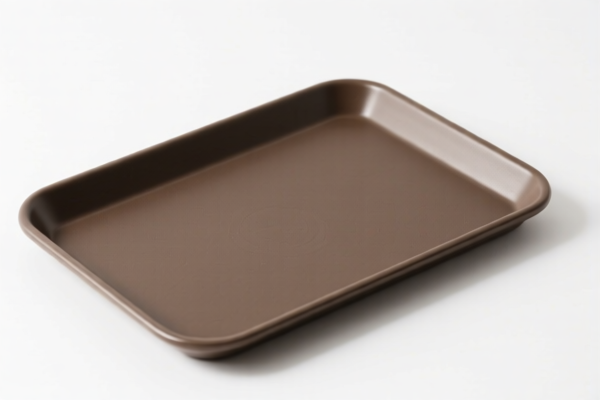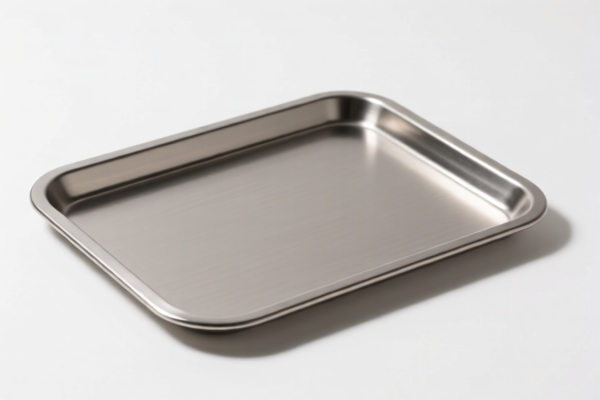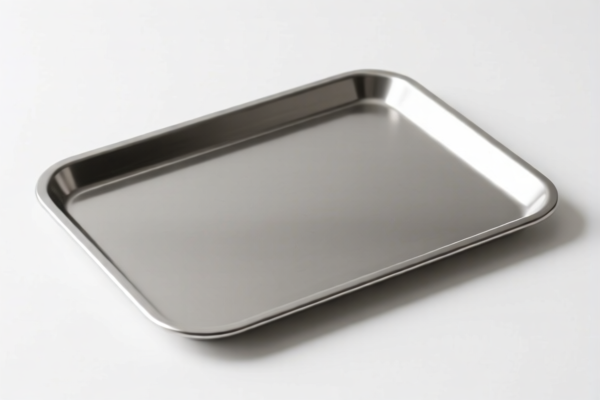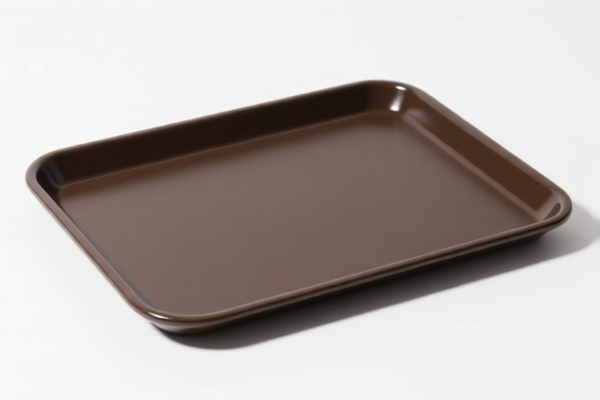| HS Code | Official Doc | Tariff Rate | Origin | Destination | Effective Date |
|---|---|---|---|---|---|
| 3926909989 | Doc | 42.8% | CN | US | 2025-05-12 |
| 3901909000 | Doc | 61.5% | CN | US | 2025-05-12 |
| 3914006000 | Doc | 58.9% | CN | US | 2025-05-12 |
| 7326908688 | Doc | 82.9% | CN | US | 2025-05-12 |
| 7615107125 | Doc | 58.1% | CN | US | 2025-05-12 |
| 4421918800 | Doc | 30.0% | CN | US | 2025-05-12 |
| 4421998800 | Doc | 37.5% | CN | US | 2025-05-12 |
| 6914108000 | Doc | 64.0% | CN | US | 2025-05-12 |
| 6914908000 | Doc | 60.6% | CN | US | 2025-05-12 |
| 4823690040 | Doc | 55.0% | CN | US | 2025-05-12 |




Okay, let's break down these HS codes for your "STORAGE TRAY" declarations. I'll provide a structured analysis, explaining the code meanings, potential issues, and recommendations.
Understanding HS Codes: A Quick Primer
HS codes (Harmonized System codes) are internationally standardized codes used to classify traded products. They determine the import duties and taxes applicable to your goods. The first 6 digits are generally standardized globally, while the last digits can vary by country.
Here's a breakdown of each HS code you provided:
1. 3926.90.99.89 – Other articles of plastics and articles of other materials of headings 3901 to 3914: Other: Other Other
- 39: Plastics and articles thereof.
- 26: Other articles of plastics.
- 90: Other.
- 99: Other.
- 89: Other.
- Tax: Base Tariff: 5.3%, Additional Tariff: 7.5%, Post 2025.4.2 Additional Tariff: 30%, Total Tax: 42.8%
- Notes: This is a very broad category. It's crucial to confirm the exact plastic composition and intended use of the tray. If it contains significant metal components, this code might be incorrect.
2. 3901.90.90.00 – Polymers of ethylene, in primary forms: Other: Other: Other
- 39: Plastics and articles thereof.
- 01: Polymers of ethylene.
- 90: Other.
- 90: Other.
- 00: Other.
- Tax: Base Tariff: 6.5%, Additional Tariff: 25.0%, Post 2025.4.2 Additional Tariff: 30%, Total Tax: 61.5%
- Notes: This code applies to raw ethylene polymers. If your tray is a finished product made from ethylene polymers, this code is likely incorrect.
3. 3914.00.60.00 – Ion-exchangers based on polymers of headings 3901 to 3913, in primary forms: Other
- 39: Plastics and articles thereof.
- 14: Ion-exchangers based on polymers.
- 00: Other.
- 60: Other.
- Tax: Base Tariff: 3.9%, Additional Tariff: 25.0%, Post 2025.4.2 Additional Tariff: 30%, Total Tax: 58.9%
- Notes: This code is for ion-exchange resins. Unless your tray is specifically designed as an ion-exchange device, this code is likely incorrect.
4. 7326.90.86.88 – Other articles of iron or steel: Other: Other: Other: Other Other
- 73: Iron or steel articles.
- 26: Other articles of iron or steel.
- 90: Other.
- 86: Other.
- 88: Other.
- Tax: Base Tariff: 2.9%, Additional Tariff: 25.0%, Post 2025.4.2 Additional Tariff: 30%, Total Tax: 82.9%
- Notes: This code is for iron or steel articles. Confirm the material composition. If it's stainless steel, the tariff might differ.
5. 7615.10.71.25 – Table, kitchen or other household articles and parts thereof, of aluminum; pot scourers and scouring or polishing pads, gloves and the like, of aluminum; sanitary ware and parts thereof, of aluminum: Table, kitchen or other household articles and parts thereof; pot scourers and scouring or polishing pads, gloves and the like: Other: Cooking and kitchen ware: Not enameled or glazed and not containing nonstick interior finishes: Other Containers suitable for food preparation, baking, reheating or storage, 0.04 mm or more but not over 0.22 mm in thickness
- 76: Aluminum articles.
- 15: Table, kitchen or household articles.
- 10: Other.
- 71: Other.
- 25: Other.
- Tax: Base Tariff: 3.1%, Additional Tariff: 0.0%, Post 2025.4.2 Additional Tariff: 30%, Total Tax: 58.1%
- Notes: This code seems more appropriate if the tray is made of aluminum and used for food preparation. Verify the thickness of the aluminum.
6. 4421.91.88.00 – Other articles of wood: Other: Of bamboo: Canoe paddles
- 44: Wood articles.
- 21: Other articles of wood.
- 91: Other.
- 88: Other.
- Tax: Base Tariff: 0.0%, Additional Tariff: 0.0%, Post 2025.4.2 Additional Tariff: 30%, Total Tax: 30.0%
- Notes: This code is for bamboo articles. Confirm if the tray is made of bamboo.
7. 4421.99.88.00 – Other articles of wood: Other: Other: Canoe paddles
- 44: Wood articles.
- 21: Other articles of wood.
- 99: Other.
- 88: Other.
- Tax: Base Tariff: 0.0%, Additional Tariff: 7.5%, Post 2025.4.2 Additional Tariff: 30%, Total Tax: 37.5%
- Notes: This code is for other wood articles. Confirm the wood type.
8. 6914.10.80.00 – Other ceramic articles: Of porcelain or china: Other
- 69: Ceramic articles.
- 14: Other ceramic articles.
- 10: Other.
- 80: Other.
- Tax: Base Tariff: 9.0%, Additional Tariff: 25.0%, Post 2025.4.2 Additional Tariff: 30%, Total Tax: 64.0%
- Notes: This code is for porcelain or china articles. Confirm the ceramic material.
9. 6914.90.80.00 – Other ceramic articles: Other: Other
- 69: Ceramic articles.
- 14: Other ceramic articles.
- 90: Other.
- 80: Other.
- Tax: Base Tariff: 5.6%, Additional Tariff: 25.0%, Post 2025.4.2 Additional Tariff: 30%, Total Tax: 60.6%
- Notes: This code is for other ceramic articles. Confirm the ceramic material.
10. 4823.69.00.40 – Other paper, paperboard, cellulose wadding and webs of cellulose fibers, cut to size or shape; other articles of paper pulp, paper, paperboard, cellulose wadding or webs of cellulose fibers: Trays, dishes, plates, cups and the like, of paper or paperboard: Other Other
- 48: Paper articles.
- 23: Other paper articles.
- 69: Other.
- 00: Other.
- 40: Other.
- Tax: Base Tariff: 0.0%, Additional Tariff: 25.0%, Post 2025.4.2 Additional Tariff: 30%, Total Tax: 55.0%
- Notes: This code is for paper or paperboard articles. Confirm the material.
Recommendations:
- Material Confirmation: The most important step is to accurately identify the primary material of your storage trays. Is it plastic, wood, aluminum, ceramic, paper, or a combination?
- Detailed Description: Provide a more detailed description of the tray's function and construction.
- Intended Use: What is the tray used for? (e.g., food storage, organization, display)
- Component Breakdown: If the tray is made of multiple materials, list each material and its percentage composition.
- Certification: Depending on the material and intended use (especially for food contact), you may need certifications (e.g., FDA, LFGB).
- Post 2025.4.2 Tariffs: Be aware of the tariff changes coming into effect after April 2, 2025.
Disclaimer: I am an AI and cannot provide definitive customs classification advice. This information is for general guidance only. You should consult with a licensed customs broker or your local customs authority for accurate classification and compliance.
Customer Reviews
No reviews yet.